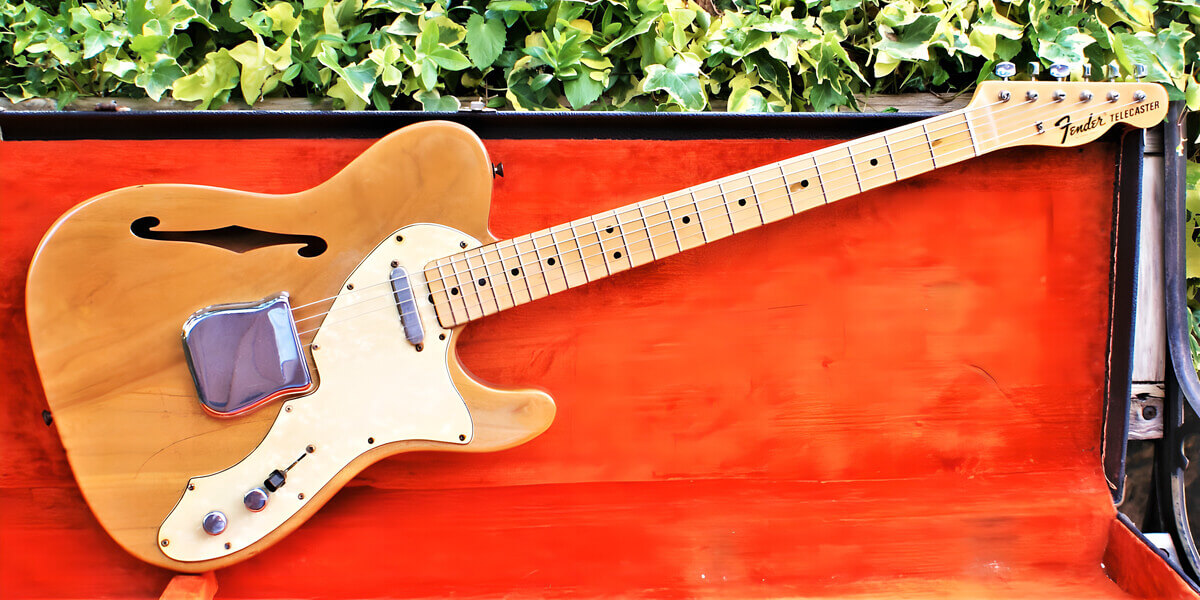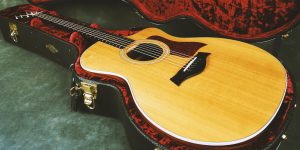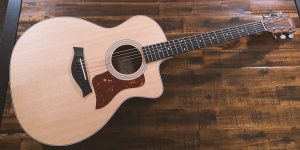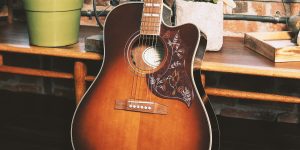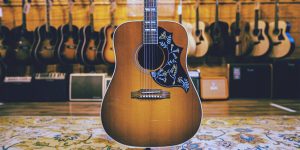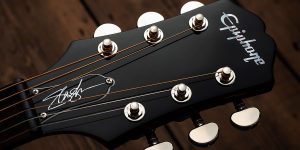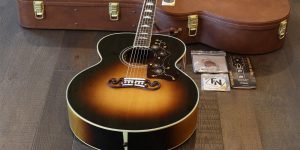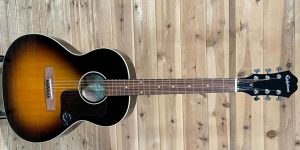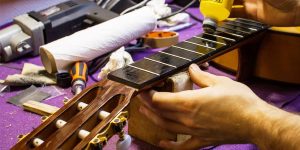In the world of guitars, where the diversity of designs and tonal possibilities seems limitless, a unique category stands out – thin guitars. These instruments are often referred to as “thinline” or “semi-hollow” guitars. In this article, I will clearly define what a thinline guitar is and discover the amazing blend of attributes that make it a popular choice for artists of all genres.
Thin guitars provide a niche that appeals to musicians looking for an instrument that smoothly transcends the boundaries of a range of genres thanks to their warm and deep sound as well as their compact and ergonomic design. So get ready for a very unusual journey into the world of semi-hollow guitars.
Anatomy of a thin-body acoustic guitar

Thin-body guitars possess several key physical characteristics that distinguish them from traditional full-body acoustic guitars:
- The most obvious feature is their slimmer body profile.
- Hollow cavities within the body, often with soundholes (such as F-holes) on the top, similar to those found on violins.
- Some have single-cutaway designs, like the classic Gibson ES-335, while others feature double-cutaway designs for easier access to higher frets.
- Ergonomic contours and body shapes that enhance player comfort. These contours can include beveled edges, belly cuts, and forearm contours.
The most significant difference between thin-body guitars and traditional full-body acoustics is the reduced body depth of the former. In addition, they often offer a warmer, mellow, and airy sound compared to the bold and robust tone of full-body acoustics. I’d also like to point out that thinline guitars tend to have less feedback when amplified at high volumes compared to full-body acoustics.
As a result, the reduced depth and size of thin-body guitars make them exceptionally comfortable to play, reducing fatigue during extended practice sessions or live performances. Their lightweight design makes them easy to carry and transport.
Comfort and ergonomics
Playing a thin-body acoustic guitar offers several ergonomic advantages that contribute to increased comfort during both practice and performance. These benefits extend to various aspects, including longer playing sessions, and are especially beneficial for guitarists who are more Loki-like in physique than Hulk or Thor.
Enhanced playability and fret access make it easier for gamers to hit the right notes accurately and maintain better timing during rhythm games, contributing to higher scores and a more enjoyable gaming experience.
Smaller-bodied guitarists, such as children, teenagers, and individuals with petite frames, can especially benefit from playing thin-bodied guitars. The narrower neck and slimmer body make it easier for smaller hands to navigate the fretboard, facilitating better finger placement and chord formation. They also reduce the sense of being overwhelmed by a larger instrument.
The versatility of thin-body acoustic guitars
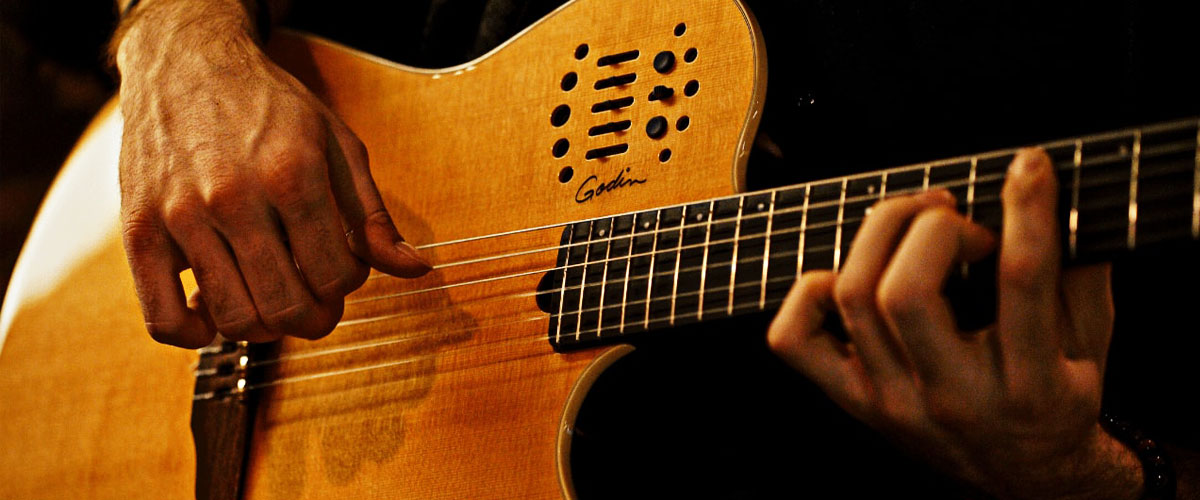
Thinline acoustic guitar finds its place in a diverse range of musical genres, each benefiting from its unique characteristics:
- The reduced body size and feedback resistance make them perfect for intricate jazz chords and fingerstyle playing.
- Blues guitarists often favor slim-body guitars for their ability to produce smooth, expressive tones.
- They are excellent guitars for folk musicians since they may be used for fingerpicking, strumming, and accompanying.
- Rockabilly musicians appreciate the twangy and bright tones of slim-body guitars.
- Many indie and alternative rock musicians opt for slim-body electric guitars to cover a wide spectrum of sounds, from jangly cleans to gritty distortion.
Thinline guitars are excellent for fingerstyle playing due to their clear and balanced tonal response. The slim neck profile also facilitates precise finger placement. Beginners often find slim-body guitars easier to handle and more comfortable to play due to their reduced size and weight. On the other hand, advanced players appreciate them for their challenges. They are suited for professional musicians who desire to improve their playing skills and dynamics because of the tonal intricacies that call for a higher level of control.
The legendary blues guitarist B.B. King was known for his affection for the Gibson ES-335, a classic semi-hollow slim-body electric guitar. His emotive and expressive blues playing made the ES-335 iconic in the blues genre.
Thom Yorke, the lead singer and guitarist of Radiohead, has been seen using various slim-body electric guitars. These guitars contribute to Radiohead’s distinctive sound, which blends elements of rock, alternative, and experimental music.
Another example is the folk singer-songwriter Nick Drake, who favored a slim acoustic guitar for his intricate fingerstyle compositions.
Sound profile of thinline guitars

The tonal qualities of a guitar are greatly influenced by its thickness, and the resonance, sustain, and projection of thin-body guitars are very different from those of full-body guitars.
By enabling the tone to resonate within the hollow chambers of the body, the semi-hollow design can improve the resonance of the guitar. It also has less sustain compared to full-body guitars. The reduced body mass and shorter resonance chamber limit the amount of energy that can be stored and released in the form of sustained notes. This can be advantageous for players seeking a precise and controlled sound, but it may not be ideal for those who prefer longer sustain for expressive playing.
Narrow-body acoustic guitar may have slightly reduced projection compared to full-body guitar. However, its projection will depend on factors like the type of wood used, the bracing pattern, and the design of the soundholes.
Here’s a comparison table highlighting the key differences in sound between thin-body and full-body guitars.
| Aspect | Thin-Body Guitars | Full-Body Guitars |
|---|---|---|
| Tonal characteristics | Warm, mellow, and somewhat airy | Rich, full-bodied, and resonant |
| Attack and response | Quick attack | Responsive to fingerpicking |
| Feedback resistance | Less prone to feedback | More susceptible to feedback |
| Projection | Slightly reduced | Strong projection |
| Sustain | Limited | Extended |
| Playability | Comfortable and ergonomic | Comfort varies based on body size |
| Suitable genres | Jazz, blues, specific styles | Versatile across various genres |
Well, now you are familiar with these unique musical instruments and have learned their features, advantages, and disadvantages. The choice is yours.

